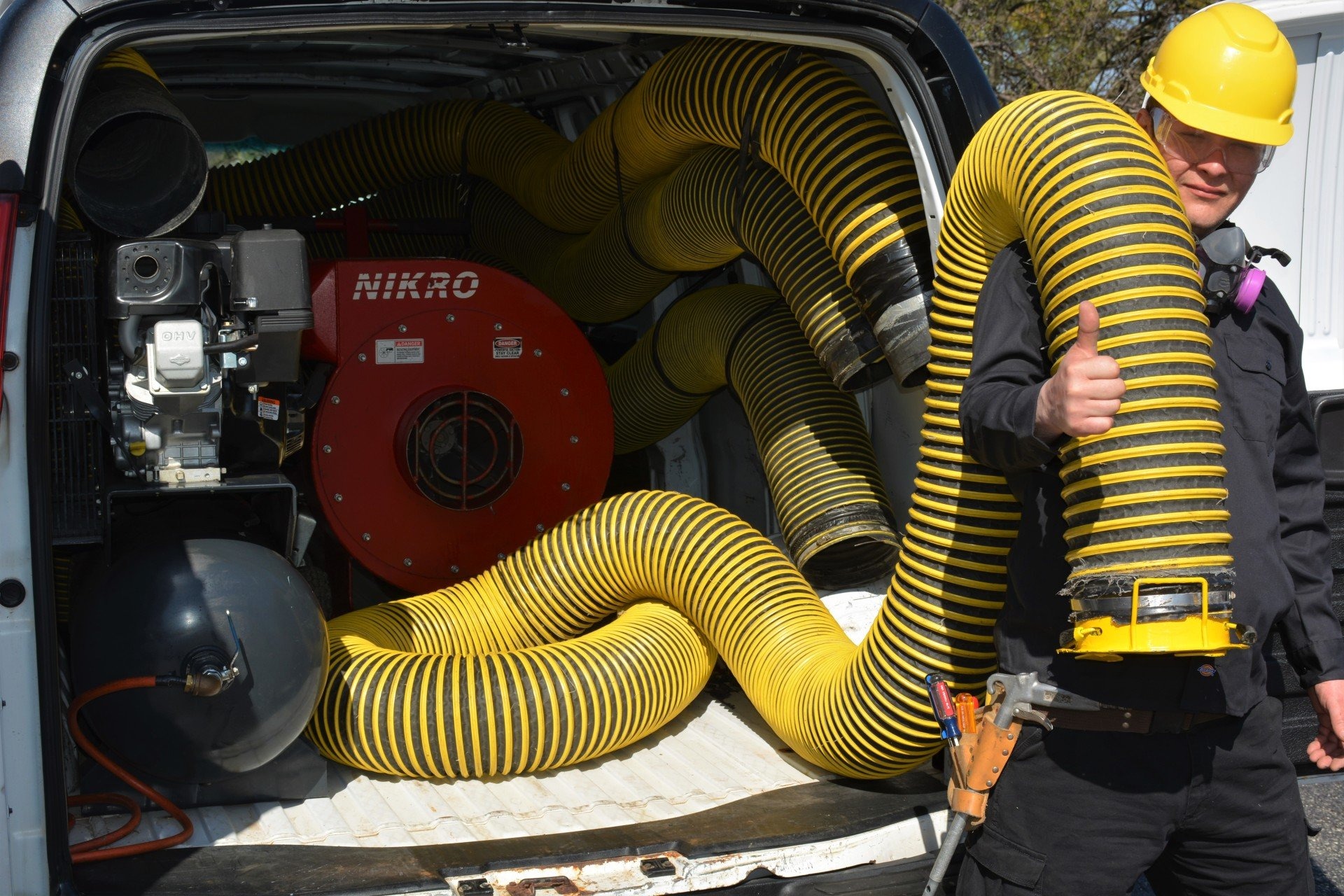
Living in Tuscaloosa, Alabama, means embracing a lifestyle where southern charm meets modern amenities. One crucial aspect of maintaining your home or business in this warm and humid weather is ensuring your air ducts are clean. Air Duct Cleaning in Tuscaloosa, Alabama, is essential for maintaining good air quality, reducing allergens, and increasing the efficiency of your HVAC system.

What is Air Duct Cleaning?
A well-maintained air duct system is pivotal for ensuring clean indoor air quality. But what exactly is air duct cleaning? It involves the meticulous cleaning of various heating and cooling system components, including supply and return air ducts, registers, grilles, diffusers, heat exchangers, and other parts. Professional cleaning ensures that contaminants like dust, mold, and bacteria are effectively removed, significantly improving the air quality.
Why is it Important?
Improved Air Quality
The primary reason for air duct cleaning is to enhance air quality. Over time, air ducts accumulate dust, pollen, mold, and other allergens. Ignoring this critical maintenance can lead to poor indoor air quality, which can exacerbate allergies and respiratory issues.
Energy Efficiency
A clean air duct system runs more efficiently. When dust and debris clog the ducts, your HVAC system has to work harder to push air through the system, consuming more energy. According to the U.S. Department of Energy, 25 to 40 percent of energy used for heating or cooling is wasted due to contaminants in the system. By ensuring regular HVAC maintenance, including duct cleaning, you can reduce energy consumption and lower your utility bills.
Prolongs HVAC System Lifespan
Regular cleaning of your air ducts can extend the lifespan of your HVAC system. Contaminants in the heating and cooling system cause it to work harder, which can lead to wear and tear and eventually system failure. Regular maintenance, including air duct cleaning, ensures the system operates smoothly and lasts longer.
When Should You Clean Your Air Ducts?
Many homeowners and business owners wonder about the optimal timing for air duct cleaning. Generally, it’s recommended to clean your air ducts every three to five years. However, certain situations may call for more frequent cleaning:
- If there is visible mold growth inside the ducts or on other components of your HVAC system.
- If you notice insects or rodents infesting your ducts.
- When your ducts are clogged with excessive amounts of dust and debris.
- If someone in your home or office suffers from allergies or respiratory issues.
To ensure that your ducts remain in optimal condition, consider scheduling regular inspections by a professional. Regular inspections help identify potential issues before they become significant problems.
How is Air Duct Cleaning Performed?
Professional duct cleaning involves specialized tools and equipment to dislodge dirt and debris from the ductwork. A high-powered vacuum is then used to remove these contaminants. Heres a step-by-step outline of the process:
Inspection
The process begins with a thorough inspection of your duct system to assess its condition. Technicians check for any visible signs of contamination, such as dust buildup or mold growth.
Breaking Contaminants Loose
Technicians use specialized tools, such as brushes and air whips, to break loose the contaminants from the duct walls. This step ensures that all contaminants are dislodged and ready for removal.
Vacuum Collection
A high-powered vacuum system is used to create negative pressure, ensuring that the dislodged contaminants are effectively removed from the ducts. This step is crucial for preventing the spread of dust and debris into your living spaces.
System Cleaning
The final step involves cleaning other components of the HVAC system, such as the blower motor, evaporator coil, and filters. This comprehensive cleaning ensures that the entire system is free of contaminants and operating efficiently.

Choosing a Professional Air Duct Cleaning Service
When it comes to selecting a professional service for air duct cleaning in Tuscaloosa, Alabama, its essential to choose a reputable company. Here are some factors to consider:
Certification
Ensure that the company is certified by recognized organizations, such as the National Air Duct Cleaners Association (NADCA). Certification indicates that the company adheres to industry standards and best practices.
Experience
Look for a company with extensive experience in air duct cleaning. Experienced professionals are more likely to provide high-quality service and effectively address any issues that may arise.
Customer Reviews
Check customer reviews and testimonials to gauge the companys reputation. Positive reviews indicate satisfied customers and reliable service.
Transparent Pricing
Choose a company that provides transparent pricing and detailed quotes. Avoid companies that offer exceptionally low prices, as they may not deliver the quality of service you expect.
Conclusion
Air duct cleaning is a critical aspect of maintaining a healthy and efficient HVAC system in Tuscaloosa, Alabama. Regular cleaning ensures improved air quality, energy efficiency, and prolonged system lifespan. By understanding the importance of air duct cleaning and choosing a reputable service provider, you can ensure a comfortable and healthy indoor environment for your home or business.

FAQs
1. How often should I have my air ducts cleaned?
Generally, it’s recommended to clean your air ducts every three to five years. However, if there are specific issues such as mold growth or excessive dust build-up, more frequent cleaning may be necessary.
2. Can I clean my air ducts myself?
While some basic cleaning, such as vacuuming vents, can be done by homeowners, comprehensive air duct cleaning requires specialized equipment and professional expertise. Its advisable to hire a certified professional for thorough cleaning.
3. What are the signs that my air ducts need cleaning?
Signs that indicate your air ducts need cleaning include visible dust or mold growth, a musty odor coming from the vents, reduced airflow from the HVAC system, and increased allergy symptoms among occupants.